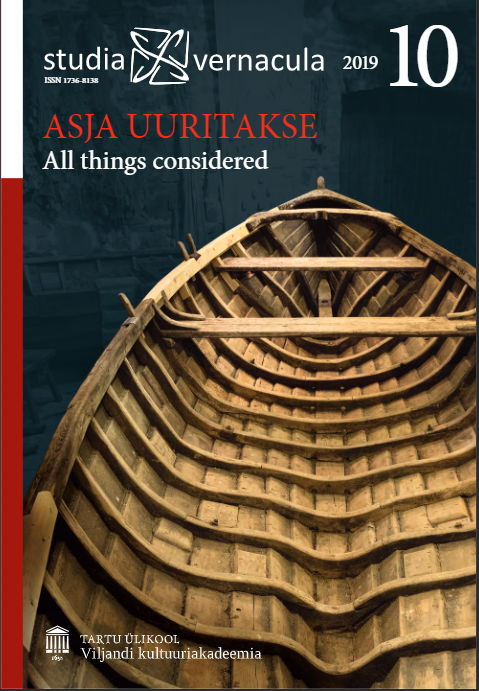Väärikas teos Eesti pulmatraditsioonidest võõramaalaste pilgu läbi / A good work on the wedding customs of Estonians as seen through the eyes of foreigners
DOI:
https://doi.org/10.12697/sv.2019.10.174-179Abstract
In 2018 a remarkable book compiled by Ants Hein was published: „Vanaaja pulm. Valitud tekste ja pilte 16. sajandi keskpaigast 19. aastasaja viimase veerandini“ (Weddings of the Bygone Days. Selected Texts and Pictures from the Middle of the 16th Century to the Last Quarter of the 19th Century).
Hein has assembled a decent collection of sources about the wedding customs of the local peasants, produced by foreigners travelling through and residing in the Estonian and Livonian provinces. The authors of the selected texts vary from visitors passing through to priests and private teachers who lived here for decades. The texts are presented in a chronological sequence, with thematic insights into contextualising topics, such as clerical advice to newly-weds from the 17th century, passages on festive foods, music and dances, an essay on sexual relations before marriage, and so on. The information about Estonian wedding customs is presented systematically and the wider social context is taken into account. Every excerpt is accompanied by a compiler’s comment, discussing the writer’s period and reason for visiting Estonia. Altogether approximately 120 diverse sources have been used in the collection.
The outsider’s perspective is evident in the descriptions. Sources in the Estonian language, mostly the results of the great initiative of oral folklore collecting called for by Jakob Hurt, generally cover the period from the mid-19th century, but foreign written sources enable us to extend our ‘national memory’ to more distant periods of time and to a wider array of viewpoints and languages. It is an acknowledged ethnographic truth that in order to notice the most regular everyday details in a culture, one should not be brought up in that culture.
The book is richly illustrated and the pictures form perhaps the most important part of it for a native craft researcher. Although some of the captions may be a bit far-fetched, the book as a whole is a valuable, rich and a praiseworthy contribution to the information that is available on the topic of Estonian weddings. Material has been gathered from the archives of Germany, Russia and Latvia; many documents have been translated into Estonian from German, which used to be widely spoken here, but has lost its importance among present-day Estonians. It is a pleasure and a privilege that such a book has been prepared for us.

